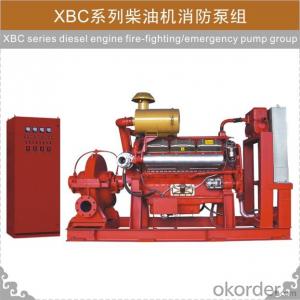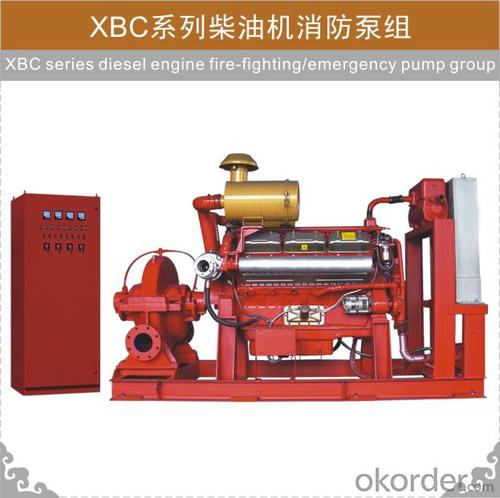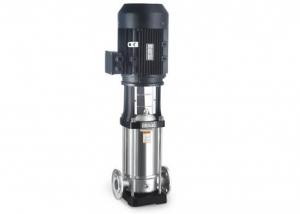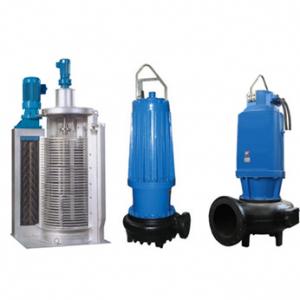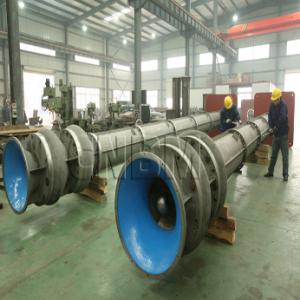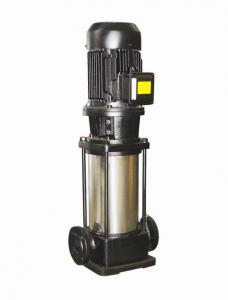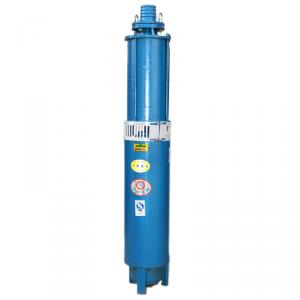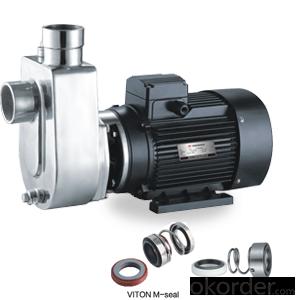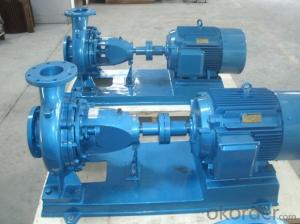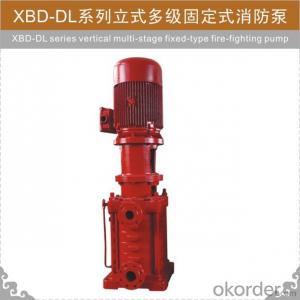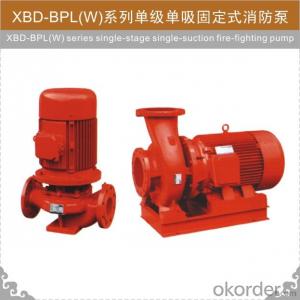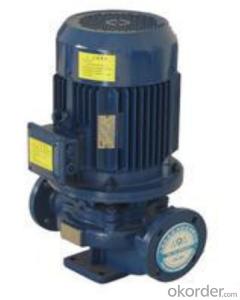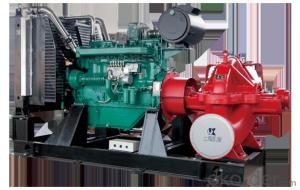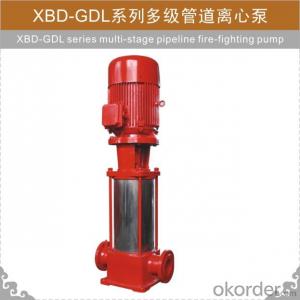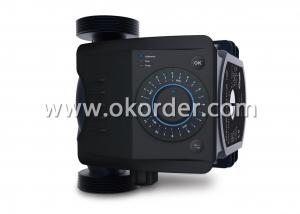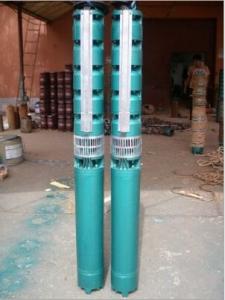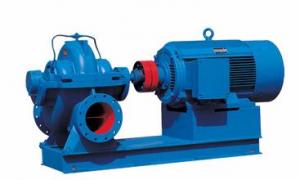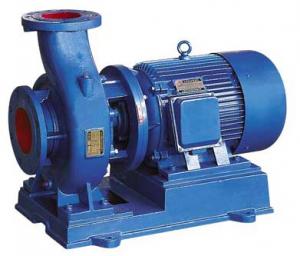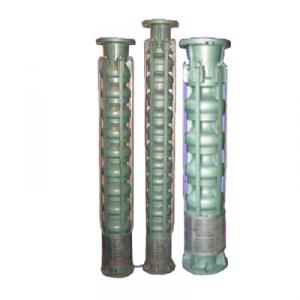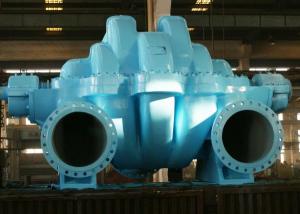XBC Diesel Engine Fire-fighting Pump
- Loading Port:
- China Main Port
- Payment Terms:
- TT OR LC
- Min Order Qty:
- -
- Supply Capability:
- -
OKorder Service Pledge
OKorder Financial Service
You Might Also Like
Summary
XBC series diesel engine fire-fighting pump group is a new-style fire-fighting equipment ("equipment" thereaf-
ter) developed by this Co. in accordance with GB6245-98 Fire-fighting pumps and NEPA20 Installation of cen
trifugal fire-fighting pumps etc.standards and, upon the fitted fire-fighting pumps (single-stage single-suction type,
single-stage dual-suction type and sectional multistage type), canbe divided into XBC-IS, XBC-SLOW and XBC-D theree sub-series. The equipment has a wide range of pressure and temperature and can be used for almost every occasion necessary for fire-fighting.
The diesel engine fitted with the equipment is an excellent product domestic or imported, features good starting performance, strong overload capacity, compact structure, easy maintenance and use and high degree of automation. The equipment is really a fire-fighting one advanced and reliable in performance.
<1> Technology Parameters:
Environmental temperature: +5º C-º C+40
Air relative humidity: ≤ 90%
Flow: 5-120L/S
Rotary Speed: 1450r/min
Calibre: Φ50-Φ250
Temperature Range: ≤70º C
Working Pressure: ≤2. 5MPa
<2>Features:
a)Compact structure
b)Stable running, low noise
c)No leakage
d)Convenient operation
e)Viewing from the inlet of the pump, the outlet of it can
be mounted in one of the three ways, horizontally leftward,
vertically upward and horizontally rightward
<3>Application:
a)Water supply for the fixed-fighting system of both industrial and civil builtings.
b)Fire hydrant fire-extinguishing system
c)Automatic spraying fire-extinguishing system
d)Fog-spraying fire-extinguishing system etc
- Q: how to remove water pump on 95 honda accord
- advance auto or auto zone has the haynes manual they run around 30 bucks will walk you through it. since the water pump and timing belt are the same area then do the belt too
- Q: Pump impeller diameter plus assembly what changes? What's the effect on the motor?
- Two item 1.5 kilowatt type self suction pump original impeller 14.7cm installed 15.5cm may be a problem.After the impeller increases, the flow, head, shaft power will increase (increase in volume see the following formula), the original 1.5KW motor may overload operation.The larger the diameter of the impeller, the greater the lift, the greater the flow rate, because the flow rate of water depends on the centrifugal force generated by the impeller rotation and the line speed on the tangent. The greater the diameter, the greater the centrifugal force and the linear speed. The relationship between the centrifugal pump water delivery and the vacuum degree is that the centrifugal pump is the centrifugal force principle to complete pumping. Without water, the time and space turn will burn out the equipment. Vacuum pumping or vacuum pumping two times.The vacuum of the inlet of the centrifugal pump is composed of three parts (the equation of the inlet of the pump and the level of the suction liquid).
- Q: need lincoln 01 water pump and radiator do 2000 parts fit an 01?
- We need to know what model of Lincoln you're working on. The water pump from an LS 3.9L isn't going to fit the 4.6L or 5.4L of a Aviator or Navigator. You must be more specific. The part numbers show it's the same water pump for a V8 2000-2001. I bet if looked further, it's probably the same pump up to the end of production on 2006. Don't forget to bleed the air from the cooling system when you complete the repair job!! You'll definitely have ovrheating issues if it isn't right. MAke sure it's the V8 (3.9L) pump and not the V6 (3.0L) pump.
- Q: 1.5KW water pump caliber is 40, what is the flow rate?
- Caliber 40 pumps, 1.5KW model IRG40-160A, flow 5.9 cubic meters, 28 meters per hour head
- Q: Im considering installing an electric water pump in my car and i dont know much about electric water pumps yet so if you could tolerate a couple of dumb questions....? are electric water pumps reliable enough to be put into a daily driver (i just used the meziere name as an example, its the only name i am familiar with in electric water pumps)? i realise what the engine is basically done if the water pump goes.... could a change this small ever show up on either mpg or hp readings for a 200hp v6? finally, if the electric water pump just isnt worth the reliability risk, would a water pump underdrive pully do (almost) the same job of freeing work from the engine without putting the motor in harms way? thanks!
- Yes, Meziere makes a good pump although, I have a CSR on the 496ci in my Chevelle and it works great too! ADDED: Yes, I only drive this car 2 to 3 times a week.
- Q: I have a Stamas boat that I am in the middle of restoring. It has 2 chevy 350's, with borg warner (sp) tranny's, and v-drives. Anyway, it has standard water pumps to cool the engines, and it had 2 Sherwood pumps to circulate the water to cool the tranny's, and v-drives. First, I am using the boat in Lake Michigan only, the water is very cool year round since it is such a big body of fresh water. I was wondering if there was any recommendation on possibly using 2 electric pumps to circulate the water? If so, what would a good unit be? Second, the transmission coolers were brass, with a honey comb in the center for the ATS fluid to run through, and the water would run on the outside to cool the fluid. Is this a more effective way to cool the fluid than with those expensive brass fitting? Just checking before I spend a few hundred on them to see if a better way to cool my engine and tranny's, in all honestly though, I am more worried about effectiveness than cost.
- You would be playing with fire to use electric pumps to cool the transmissions and v drives. I doubt they would put out the volume of cooling water needed to cool them and have enough extra volume just in case. Besides, the raw water pumps also would cool the engines and exhaust systems if they are raw water cooled or they would cool the anti freeze and exhaust and transmissions with heat exchangers and oil coolers. Those transmission coolers should be plumbed into the raw water system using the same water that flows through the engines. Not to mention the reliability of the electric pumps vs engine driven pumps.
- Q: Hey guys, I have a American Volkswagen Jetta 1999 manual transmission Gas Fuel, and the water pump is messed and I need to know where it goes. In front of the radiator? or somewhere else? Does anyone know where I can get any websites showing me instructions? Thanks.
- A instruction manual would be on hand to steer you by. it incredibly is a reasonably extensive pastime. As a run down, you will prefer a huge floor jack with a block of timber so which you will placed it below the oil pan. you're able to try this so which you will eliminate the motor mount which would be on your way. The water pump is pushed by the timing belt. you will prefer to get a sparkling t-belt, t-belt tensioner, rollers for timing belt, etc. additionally notice that as quickly as you're refilling equipment with coolant, there'll be lots of air interior the equipment. in case you do not have a device that vacuums all the air and pressurizes the coolant for the period of the equipment, you will could shop topping off the coolant for a whilst till all the air escapes as youchronic it. desire this facilitates.
- Q: A tank is full of water. Find the work W required to pump the water out of the spout. (Use 9.8 for g and 3.14 for pi . Round your answer to three significant digits.)The tank is a spherical shape has a radius r= 6m and a spout height of h=2m.I really dont know how to start this problem correctly. Any help will be appreciated. Thanks!
- The pump will not have to work until the water drains by gravity to the level of the spout. Then, Work = Weight of water * Height of lift Find the distance, d, of the center of mass for the remaining water in the bottom 2 m of the sphere. The height of lift will then be 2m - d. The hardest part is finding the distance d to the center of mass. I don't remember how to do that.
- Q: I have a 2000 chevy impala with 85K on it. I have heard/a weird rattle noise from under the hood for some time now. I once asked about it on here and got suggestions regarding front end problems. I had that checked out and the front end is good. I still have the rattle noise along with a high pitched, but not very loud, squeeling noise when I accelerate. I am leaking coolant and it seems to be coming from near one of the belts. Is this a bad water pump? If so how expensive of a fix is it and how involved of a repair is it?
- It sounds like a water pump or maybe a loose connection. It is probably time for a water pump if it hasn't been replaced yet. Parts will run under $60 and it probably involves an hour of labor. The Impala is a big car, it shouldn't be hard to get to and remove. Taking it to a shop will run under $100-$150 for everything.
- Q: Iv got a 2002 Chrysler Sebring with a 2.7 in it and recently it started leaking coolant, its been determined that i need a new water pump. Iv gotten quotes from various places and various prices but there all telling me i need to replace different things. One guy said i need a timing kit, the other guy said i dont need a timing kit but need valave covers and a couple other things, another said i dont need anything but the pump itself. Im lost and the leaks getting worse and i need to make a decision but dont know what to do. Some insight from you helpful people would be great!
- In Your Vehicle The Water Pump Is Run by the Timing Belt. If It Has been Leaking It Will have Contaminated the Timing Belt, Which Has to be Removed Anyway To Replace the Water Pump. So Replace Water Pump, Timing Belt and Tensioner And Coolant. It is Also Recommended To Replace the Thermostat At This Time.
Send your message to us
XBC Diesel Engine Fire-fighting Pump
- Loading Port:
- China Main Port
- Payment Terms:
- TT OR LC
- Min Order Qty:
- -
- Supply Capability:
- -
OKorder Service Pledge
OKorder Financial Service
Similar products
Hot products
Hot Searches
Related keywords
